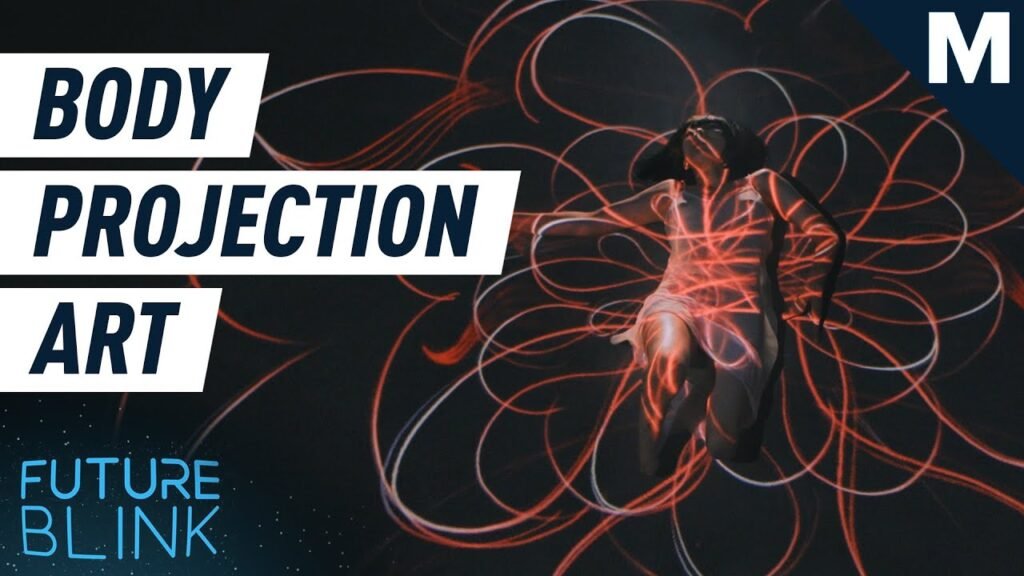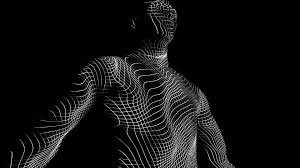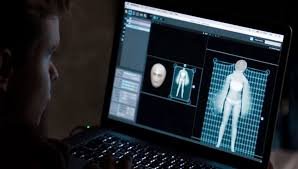Projection mapping on body parts is a fascinating mograph technique that brings art and technology together. When you use a projection map on body parts mograph, you can turn any part of the body into a canvas for amazing visuals. This technique is perfect for creating interactive and immersive experiences that make everyday life more exciting.
In this blog post, we’ll dive into how projection mapping works on different body parts. We’ll explore how this cool mograph technology can be used for fashion shows, interactive art, and even special effects in movies. Get ready to learn how projection mapping can transform the human body into a dynamic display!

What is Projection Mapping on Body Parts
Projection mapping on body parts is an exciting way to use technology to show images or videos on different parts of the body. Imagine using a special projector to display colorful patterns or animations directly onto your arm or face. This technique, known as mograph, turns your body into a moving screen.
This method works by tracking the shape and movement of the body part where the projection is aimed. With the right setup, you can make your skin look like it’s changing colors or displaying cool designs. It’s like turning your body into a canvas for amazing visuals.
In summary, projection mapping on body parts is a fun and creative technology that makes everyday objects, like our own bodies, part of a larger visual experience. It’s used in fashion, art, and even entertainment to create stunning effects.
How Does Projection Map on Body Parts Mograph Work
To understand how projection mapping on body parts works, think of it as combining a projector with special software. The projector casts images or videos onto a moving part of the body, while the software tracks the movements and adjusts the projection accordingly. This way, the images always match the body’s shape.
First, the system uses cameras or sensors to monitor the body’s movements and surface. Then, the software adjusts the projection to fit perfectly on the moving body part. This means the images stay aligned with the surface, even if it moves or changes shape.
Overall, projection mapping on body parts is about making sure that the visual effects look right no matter how the body moves. It’s a clever mix of technology and creativity to make dynamic and interactive experiences.
Top Uses for Projection Mapping on Body Parts
Projection mapping on body parts has many exciting uses. One popular use is in fashion shows, where designers use it to make clothes and accessories look more interesting. Imagine a dress that changes patterns or colors right before your eyes!
Another great use is in interactive art installations. Artists project visuals onto people’s bodies to create engaging and immersive experiences. This technology also finds its way into movies and video games, adding special effects that make scenes more thrilling.
In short, projection mapping on body parts can transform how we experience fashion, art, and entertainment. It’s a versatile tool that adds an extra layer of creativity and interaction to many fields.
The Magic of Projection Mapping in Fashion Shows
Fashion shows have become even more spectacular with projection mapping on body parts. Designers use this technology to project vibrant patterns, textures, and even animations onto models. This makes each outfit look unique and dynamic.
During a fashion show, a model might wear a dress that changes its design with every step. Projection mapping adds a magical touch by creating a visual feast that keeps the audience fascinated. The technology allows for creativity that goes beyond traditional clothing.
Overall, projection mapping in fashion is a game-changer. It turns garments into living, moving art pieces, adding a new dimension to runway shows.
Creating Interactive Art with Projection Mapping
Interactive art becomes even more exciting with projection mapping on body parts. Artists use this technology to project designs onto people, making them part of the artwork. This interaction creates a unique and personal experience for each viewer.
By combining projections with movement, artists can make their work come alive. For example, a person might see flowers growing on their skin or patterns that follow their gestures. This makes the art more engaging and immersive.
In summary, projection mapping makes interactive art more captivating. It turns viewers into participants, making each experience special and memorable.
How Projection Mapping Enhances Special Effects in Movies
Projection mapping on body parts is also used to create stunning special effects in movies. This technology allows filmmakers to project realistic visuals onto actors, making scenes look more convincing and exciting. Imagine a character’s body glowing with magical lights or displaying futuristic designs.
By using projection mapping, movie makers can add effects that move and change with the actors. This creates a seamless look that enhances the overall experience. The technology helps in making special effects more integrated into the scene, making movies more immersive.
Overall, projection mapping boosts the magic of movie-making. It brings special effects to life in a way that adds depth and excitement to films.
The Science Behind Projection Map on Body Parts Mograph
The science behind projection mapping on body parts involves a mix of technology and math. The system uses cameras and sensors to track the shape and movement of the body part. This data is then used to adjust the projection so that it fits perfectly.
Special software processes the images and ensures they align with the moving surface. This requires precise calculations and real-time adjustments to keep the visuals looking accurate. The technology behind this is complex but results in amazing visual effects.
In essence, projection mapping on body parts combines science with creativity. It uses advanced technology to create stunning and interactive visual experiences.
Challenges in Using Projection Mapping on Body Parts
Using projection mapping on body parts comes with its challenges. One major issue is making sure the projection stays aligned with the moving surface. As the body moves, the projection needs to adjust quickly to avoid any misalignment.
Another challenge is dealing with different skin textures and shapes. The technology must be able to handle various body parts and their unique features to ensure the projection looks right. This requires sophisticated software and precise tracking.
Despite these challenges, projection mapping on body parts offers incredible possibilities. With continued advancements, these obstacles are becoming easier to overcome, making the technology more accessible and effective.
Future Trends in Body Part Projection Mapping
The future of projection mapping on body parts looks bright. We can expect to see even more innovative uses in fields like fashion, art, and entertainment. As technology advances, the projections will become more realistic and interactive.
New developments might include even faster and more accurate tracking systems. This would improve the alignment and quality of projections, making them look even more amazing. We might also see new applications in everyday life, turning our bodies into interactive canvases.
In summary, the future of projection mapping on body parts is full of exciting possibilities. It promises to bring more creativity and interaction to various fields, making our experiences richer and more engaging.
How to Get Started with Projection Mapping on Body Parts
Getting started with projection mapping on body parts can be a fun project. First, you’ll need a good projector and the right software to create and control the visuals. Next, you’ll set up cameras or sensors to track the body part where the projection will be.
Once you have the equipment, you can experiment with different designs and animations. Practice aligning the projection with the body part to make sure everything looks right. With some creativity and patience, you can create amazing effects.
Overall, starting with projection mapping is all about having the right tools and experimenting with different ideas. It’s a great way to explore this exciting technology and create stunning visuals.
Case Studies: Successful Projection Mapping Projects
Looking at successful projection mapping projects can provide great insights. For example, some fashion designers have used projection mapping to create stunning runway shows. Their innovative use of this technology has transformed how we see fashion.
Another case study involves interactive art installations where artists have used projection mapping to turn people into part of the artwork. These projects have captivated audiences and demonstrated the power of interactive visuals.
In summary, studying successful projection mapping projects shows how versatile and impactful this technology can be. It highlights the creative possibilities and the impressive results that can be achieved.

Tips for Perfecing Your Projection Map on Body Parts Mograph
To perfect your projection mapping on body parts, start with high-quality equipment. Invest in a good projector and accurate tracking system. Make sure your software is capable of handling complex projections and real-time adjustments.
Practice aligning the projections with the body part and adjust the settings as needed. Test different designs and animations to see what works best. With time and practice, you’ll be able to create impressive and seamless visuals.
In summary, perfecting projection mapping involves having the right tools, practicing alignment, and experimenting with different designs. These steps will help you achieve amazing results and create stunning effects.
Exploring the World of Projection Mapping on Body Parts
Projection mapping on body parts opens up a world of creative possibilities. This technology allows images to be projected onto various parts of the body, such as arms, faces, and legs. It’s like turning your body into a canvas for digital art, where you can see moving patterns, animations, and even interactive effects.
This type of projection mapping is used in many exciting ways. In entertainment, for example, performers can have stunning visuals projected onto their costumes, making their acts more spectacular. Artists use it to create interactive installations, where viewers become part of the art by having projections on their own bodies.
In fashion, designers use this technology to bring clothes to life. They project patterns and colors onto garments, making them look different with every movement. This can turn a simple outfit into a dynamic piece of art that changes in real-time.
Overall, projection mapping on body parts is a fascinating technology that enhances how we experience art, fashion, and entertainment. It adds a new layer of interactivity and visual excitement, making everyday experiences more engaging and memorable.
The Benefits of Projection Mapping on Body Parts
Projection mapping on body parts offers several benefits that make it a popular choice for various applications. One major advantage is the ability to create dynamic and interactive visuals. Unlike static images, projections can move and change in real-time, making the experience more engaging.
Another benefit is the versatility of the technology. It can be used on different parts of the body and in various settings. Whether for fashion shows, art installations, or special events, projection mapping adapts to different needs and environments. This flexibility allows for a wide range of creative expressions and applications.
Additionally, projection mapping can be a powerful tool for enhancing user experiences. For example, in interactive exhibits, visitors can see their own movements reflected in the projected visuals. This makes the experience more immersive and personalized.
In summary, projection mapping on body parts provides dynamic visuals, versatile applications, and enhanced user experiences. These benefits make it an exciting technology with many potential uses in art, fashion, and entertainment.
How Projection Mapping Can Transform Events
Projection mapping on body parts can transform ordinary events into extraordinary experiences. Imagine attending a party where guests have stunning visuals projected onto their clothes or skin. This technology can turn any event into a visual spectacle, making it memorable for everyone involved.
For events like weddings, projection mapping can create beautiful, personalized effects. Couples can have their favorite patterns, colors, or messages projected onto their outfits or even onto the venue’s walls. This adds a unique touch to the celebration, making it truly special.
In corporate events, projection mapping can be used to create impressive presentations. Companies can project logos, slogans, and other visuals onto employees or event spaces, enhancing the brand experience. It’s a creative way to grab attention and leave a lasting impression.
Overall, projection mapping has the power to elevate events from ordinary to extraordinary. It brings a touch of magic and creativity that makes every occasion stand out and be remembered.
The Role of Technology in Projection Mapping on Body Parts
Technology plays a crucial role in making projection mapping on body parts possible. This process involves a combination of advanced tools and techniques to create seamless and interactive visuals. Let’s break down how technology makes this all happen.
First, special projectors are used to display images or videos onto the body. These projectors must be powerful enough to create clear and vibrant visuals. Alongside projectors, cameras or sensors track the movement of the body, ensuring the projection stays aligned as the body changes position.
The real magic happens in the software. Advanced algorithms process the data from the sensors and adjust the projection in real-time. This technology makes sure that the visuals look right, no matter how the body moves or changes shape.
In summary, the success of projection mapping on body parts relies on a mix of powerful projectors, precise sensors, and smart software. This combination of technology ensures that the projections are dynamic, accurate, and visually stunning.
Creative Applications of Projection Mapping on Body Parts
Projection mapping on body parts offers endless creative possibilities. Artists and designers use this technology to explore new ways of presenting visuals. From interactive art installations to innovative fashion shows, the applications are both exciting and diverse.
In the world of art, artists project moving images onto people, turning them into living canvases. This creates a unique and interactive experience where viewers can see themselves as part of the artwork. It’s a fun and engaging way to experience art up close.
Fashion designers use projection mapping to add dynamic elements to their collections. They project colors, patterns, and textures onto garments, making each piece look different with every movement. This innovation brings fashion to life in a way that was never possible before.
Overall, projection mapping on body parts opens up new avenues for creativity and expression. It allows artists and designers to push the boundaries of what’s possible, creating experiences that are both visually stunning and interactive.

Conclusion
Projection mapping on body parts is a really cool technology that makes everyday experiences more exciting. By projecting images and animations directly onto people’s arms, faces, and other body parts, it turns them into living canvases for art and fun. Whether it’s for a fashion show, a party, or an art exhibit, this technology adds a magical touch that makes everything more lively and engaging.
As technology continues to improve, we can expect even more amazing uses for projection mapping. It’s a great way to blend the digital world with the real world, creating new and interactive experiences. So, keep an eye out for this technology in your favorite events and shows—it’s sure to bring a lot of creativity and excitement to the future!
